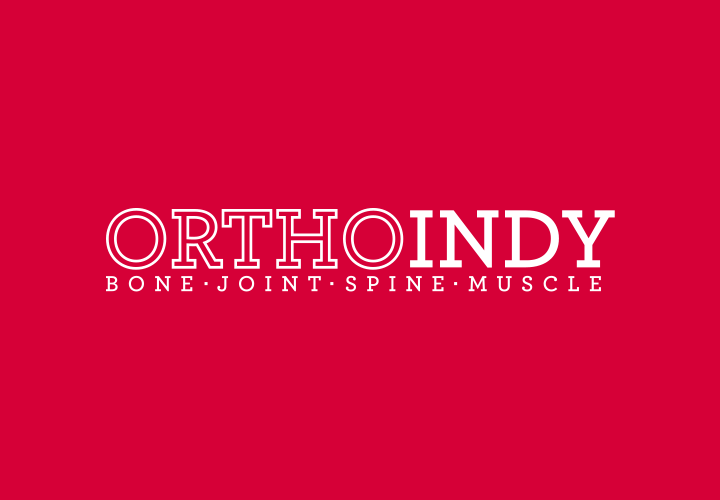Sciatica is a very common yet painful condition. Fortunately, stretches for sciatica can help relieve pain.
Read on to hear from OrthoIndy pain management physician Dr. Nicholas Jasper as he discusses the best exercises and stretches for sciatica nerve pain and the most effective sciatica treatments.
What is sciatica pain?
Back pain from sciatica originates from an impingement of the spinal nerve roots, causing inflammation and irritation of the spinal nerves.
Medically, sciatica is called lumbar radiculopathy, but it is more commonly known as a “pinched nerve.” Sitting or standing for prolonged periods can put pressure on your nerves and increase the pain.
“This pain is typically called ‘sciatica’ because the nerve roots that are most typically pinched in your low back involve either the L4, L5 or S1 nerve roots”, says Dr. Jasper.
“These nerve roots exit the spine and combine to form the sciatic nerve that then travels from your lower back and into the buttocks and down the back of each leg and into each foot.”
What causes sciatica?
It is often caused by a herniated disc, which can result from simple wear and tear due to aging. It is more common in people between 30 and 50 years old.
When a disc herniates, the gel-like center of the disc protrudes into or through the disc’s outer lining. This herniated disc will sometimes press directly on the nerve roots that exit the spine and become the sciatic nerve.
You may also feel numbness, tingling, or weakness, typically affecting one leg at a time. Other common causes of sciatica pain symptoms include:
- Degenerative disc
- Spinal stenosis
- Facet joint arthritis (bone spurs/spondylosis)
- Slipped disc (spondylolisthesis)
- Piriformis syndrome
- Sciatica during pregnancy
- Trauma
Make an appointment with an Orthoindy spine specialist
How to help relieve sciatica pain
The following things can reduce pain if you have sciatica:
- Stop smoking
- Maintain a healthy weight
- Control diabetes
- Change occupation
- Stretching
- Stretches for sciatica nerve pain
What are some effective stretches for sciatica?
While proper nutrition and a healthy lifestyle can help relieve sciatica pain, your doctor may also recommend a regimen of stretches for sciatica pain relief.
Good stretches for sciatica pain relief include:
- Simple seated stretch
- Standing piriformis stretch
- Supine piriformis stretch
- Outer hip piriformis stretch
- Groin/long adductor stretch
- Inner thigh/short adductor stretch
- Side-lying clam
OrthoIndy Physical Therapy offers treatment options, exercises and stretches for sciatica pain to provide relief.
Work with a physical therapist and make an appointment to follow a treatment plan personalized to you. In most cases, OrthoIndy Physical Therapy doesn’t require an appointment.
Learn how to stretch your sciatic nerve
Exercises for sciatic nerve pain
Your physician or physical therapist will provide you with the appropriate exercises for sciatic nerve pain, depending on your diagnosis. For some, any type of forward bending activity worsens symptoms.
“In these cases, a person would benefit more from extension-based exercises,” says Dr. Jasper. “Similarly, if back extension worsens symptoms, then a person would benefit from flexion-based exercises.
The following are some of the best exercises for sciatic nerve pain due to the minimal impact on your spine and joints:
- Walking: Walking is one of the most straightforward exercises for sciatic nerve pain. Just a 30-minute stroll can help keep you healthy and lower the chance of causing inflammation on your nerves.
- Swimming: Swimming is a great way to get in a cardio workout without putting much stress on your joints.
- Yoga: Yoga is one of the best exercises for sciatic nerve pain, and doing yoga stretches for sciatica helps relieve some of the stress on your muscles.
Exercises and stretches for sciatica to avoid
When performing exercises or stretches for sciatica pain relief, it is essential to focus on your form. Improper techniques can lead to further injuries.
Avoid these exercises if you are experiencing sciatica pain:
- AVOID heavy stretching of the hamstrings: It puts unnecessary stress on the hamstring muscles. It can affect the sciatic nerves indirectly, worsening your injury.
- AVOID straight-legged sit-ups: This exercise can damage the spinal cord structure, causing inflammation and numbness below the waist. Permanent nerve damage can occur.
- AVOID heavy deadlifts: This exercise can result in spinal injury, contributing to lower back pain.
- AVOID bent-over rows: Bad posture with bent-over rows can cause herniated discs, leading to sciatica pain.
Treatment for sciatic nerve pain
The appropriate sciatica treatments for you will be determined by your doctor after an evaluation.
Medications, physical therapy (including stretches for sciatica pain relief), and activity modification will be the first treatment option and are typically coordinated by a patient’s primary care physician or a physiatrist.
Sometimes a period of relative rest, over-the-counter anti-inflammatory medications or acetaminophen can help with symptoms. If pain continues, further treatment involves advanced imaging with MRI or CT to determine if one would benefit from injection or surgical treatment.
Additional treatments also involve prescription medications to help with inflammation and nerve pain.
“Urgent evaluation by a spine surgeon is indicated if you have leg weakness, saddle anesthesia (numbness/tingling in your groin/sitting area) or bowel/bladder incontinence,” says Dr. Jasper.
If a patient does not feel relief after a long period and nonsurgical treatments do not relieve symptoms, back surgery for sciatica may be necessary.
Schedule an appointment
Your well-being is important to us. Our orthopedic specialists can provide you with treatment options, including exercises and stretches for sciatica pain.
Learn more about the conditions that could be causing you pain, like degenerative disc disease and sciatica, and find out if treatments like spine surgery for sciatica are right for you.
If your injury or condition is recent, you can walk right into one of our OrthoIndy Urgent Care locations for immediate care. No referral is needed for rehabilitation and physical therapy to see one of our physical therapists.





